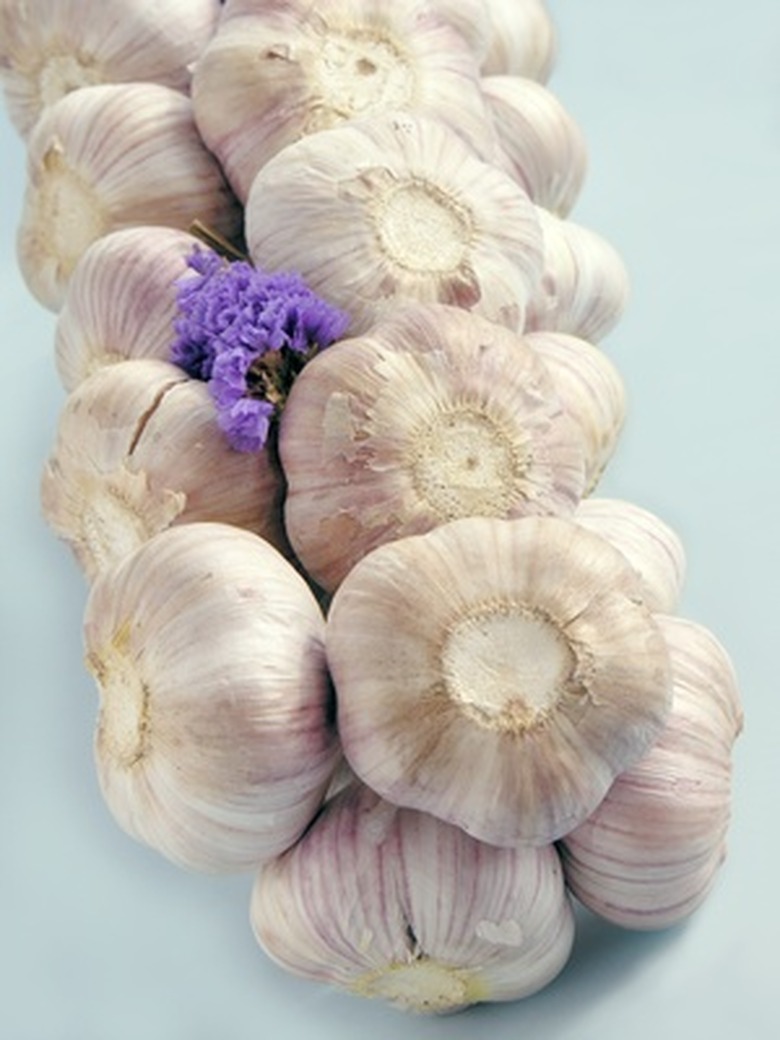How To Plant Garlic In Utah
Things Needed
- Garlic bulbs
- Shovel
- Compost or manure
- Mulch
Garlic is used in so many recipes that no herb or vegetable garden would be complete without it. The best time to plant garlic is between September and November, according to the experts at Sandhill Farms in Eden Valley, Utah. Planting about three weeks before the first hard freeze of the season will give the garlic time to develop some roots before winter.
Step 1
Select a garden location that gets at least eight hours of full sunlight a day. Plant garlic in virtually any soil in Utah that provides good drainage.
Step 2
Loosen the top 8 to 10 inches of the soil. Remove all weeds. Mix in 4 inches of well-aged compost or rotted manure to enrich the soil and improve drainage.
- Garlic is used in so many recipes that no herb or vegetable garden would be complete without it.
- Plant garlic in virtually any soil in Utah that provides good drainage.
Step 3
Crack the bulbs and plant the largest, healthiest cloves. Crack the bulbs no more than 24 hours before planting time.
Step 4
Plant the cloves with pointed end up, about 2 inches below the surface. Position planting rows 8 inches apart, with cloves planted every 6 inches. Plant garlic in tighter spacing, if you wish, but this may limit the size of the bulbs when mature.
Step 5
Spread 4 inches of mulch, such as wood chips, straw, shredded bark, leaves or grass clippings, over the planting area. Add more mulch, if necessary, when when the ground freezes. Remove the mulch after the last frost in spring.
- Crack the bulbs and plant the largest, healthiest cloves.
- Plant the cloves with pointed end up, about 2 inches below the surface.
Step 6
Provide at least 1 inch of water per week after removing the mulch. Weed the planting area often to minimize competition for nutrients. Mulch again to keep the weeds down after the garlic stems have broken the surface.
Step 7
Harvest the garlic when roughly half of the leaves have died back and turned yellow. Reduce watering when the foliage turns yellow, and halt watering two weeks before harvesting.
Step 8
Store the garlic in a cool, dry location. Soft-neck varieties are excellent for long term storage.
- Provide at least 1 inch of water per week after removing the mulch.
- Harvest the garlic when roughly half of the leaves have died back and turned yellow.
Tip
Purchase large, good-quality bulbs from a local garden center or nursery. The hard-neck and soft-neck varieties of Allium sativum are recommended for Utah gardeners, according to vegetable specialist Dan Drost of the Utah State University Extension Service. If you have roses, garlic may well become your best friend. Planting a clove of garlic next to any rose bush is the best way to keep aphids off the plant for good, according to Bridget and Maureen Boland, authors of "Old Wives' Lore for Gardeners." Timing this properly comes with experience, but the garlic will have better flavor if left dry for several weeks before you harvest.
